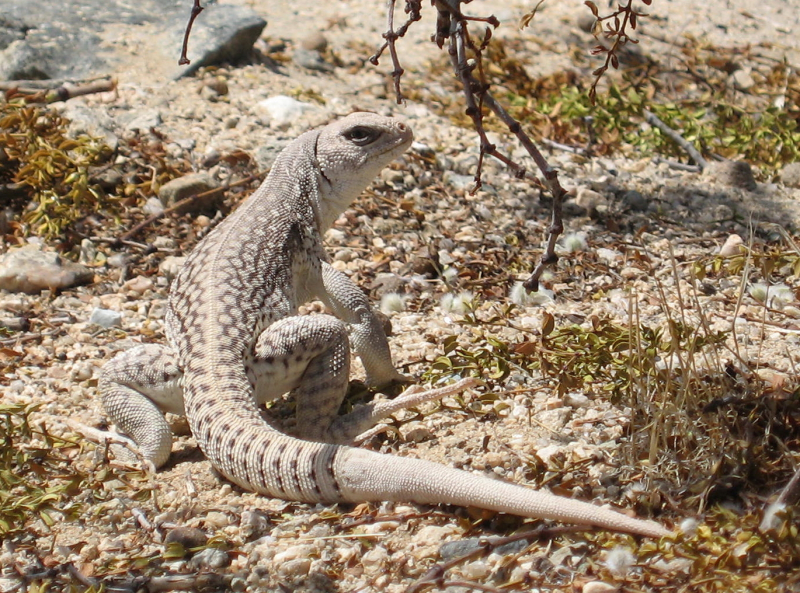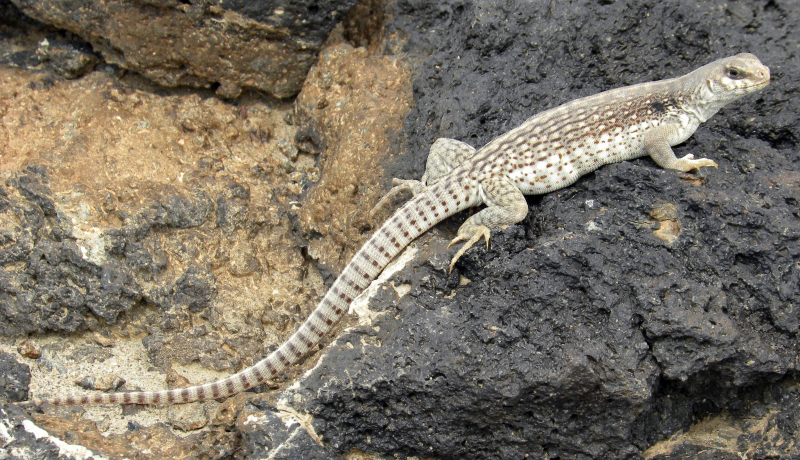Desert Iguana

The Desert Iguana (Dipsosaurus dorsalis) is an iguana species found in the Sonoran and Mojave Deserts of the Southwestern United States and northwestern Mexico, as well as on several Gulf of California islands. Their preferred environment, primarily dry, sandy desert scrubland below 1,000 meters, is mostly contained within the creosote bush's range (3,300 ft). They are widely dispersed over the Sonoran and Mojave deserts. Additionally, they are present in rocky streambeds up to 1,000 meters. These lizards live in areas of tropical deciduous woodland and arid subtropical scrub in the southern part of their range.
The desert iguana is a medium-sized lizard that can reach a maximum length of 61 cm when the tail is included. Its usual total length is 41 cm. They have a light brown reticulated pattern on their backs and flanks and are a light gray-tan to cream tint. A row of slightly expanded, keeled dorsal scales can be seen running down the middle of the back; these scales get larger as they go further down the back. Near the back legs, the reticulated pattern is replaced with brown spots, which later transform into stripes down the tail. From snout to vent, the tail is typically around 112 times longer than the body. The stomach is pallid. Both sexes' flanks get pinkish during the breeding season.











